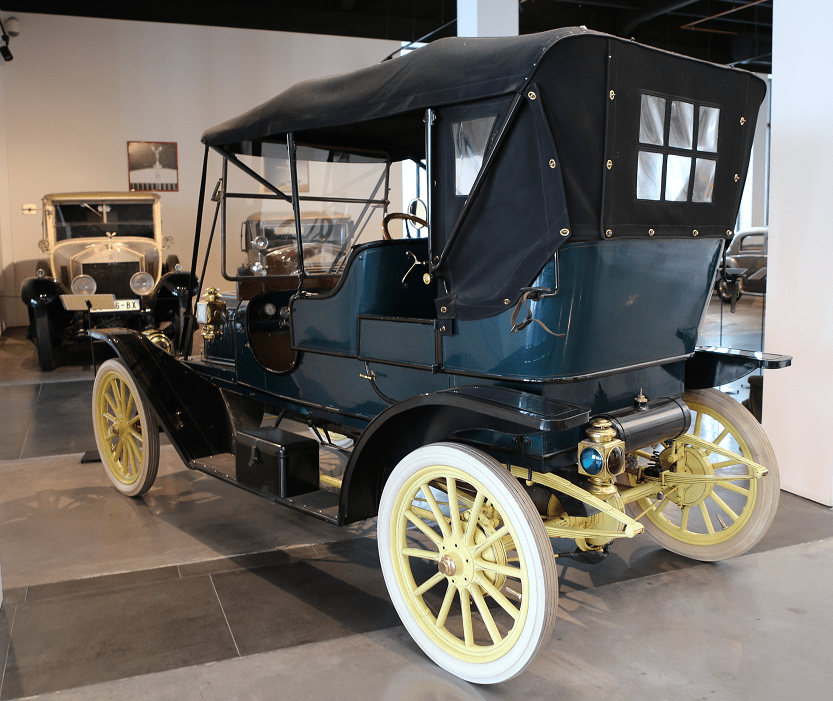Stanley-Steamer 70. Green version. The world speediest car for its time: 100 km/h in 1910. Made in USA in 1910, 20 hp.
The Stanley Motor Carriage Company was an American manufacturer of steam cars; it operated from 1902 to 1924. The cars made by the company were colloquially called Stanley Steamers, although several different models were produced.
Twins Francis E. Stanley (1849–1918) and Freelan O. Stanley (1849–1940) founded the company, after selling their photographic dry plate business to Eastman Kodak. They made their first car in 1897. During 1898 and 1899, they produced and sold over 200 cars, more than any other U.S. maker.
In 1899, Freelan and his wife Flora drove one of their cars to the top of Mount Washington in New Hampshire, the highest peak in the northeastern United States. The ascent took more than two hours and was notable as being the first time a car had climbed the 7.6 miles (12.2 km) long Mount Washington Carriage Road; the descent was accomplished by putting the engine in low gear and braking extensively. The Stanleys later sold the rights to this early design to Locomobile. In 1902 they formed their own Stanley Motor Carriage Company.
Early Stanley cars had light wooden bodies mounted on tubular steel frames with full-elliptic springs. Steam was generated in a vertical fire-tube boiler, mounted beneath the seat, with a vaporizing gasoline (later, kerosene) burner underneath.
The boiler was reinforced by several layers of piano wire wound around it, which gave it a strong but relatively light-weight shell. In early models, the vertical fire-tubes were made of copper, and were expanded into holes in the upper and lower crown sheets.
In later models, the installation of a condenser caused oil-fouling in the expansion joints, and welded steel fire-tubes had to be used. The boilers were reasonably safe since they were fitted with safety valves. Even if these failed, any dangerous over pressure would rupture one of the joints long before the boiler shell itself could burst. The resulting leakage would relieve the boiler pressure and douse the burner with very little risk to the passenger. There is not a single documented incident of a Stanley boiler exploding.
The engine had two double-acting cylinders, side-by-side and equipped with slide-valves, and it was a simple-expansion type. Drive was transmitted directly by the crankshaft to a rear-mounted differential using a chain. Owners often modified their Locomobiles by adding third-party accessories, including improved lubricators, condensers, and devices which eased the laborious starting procedure.














